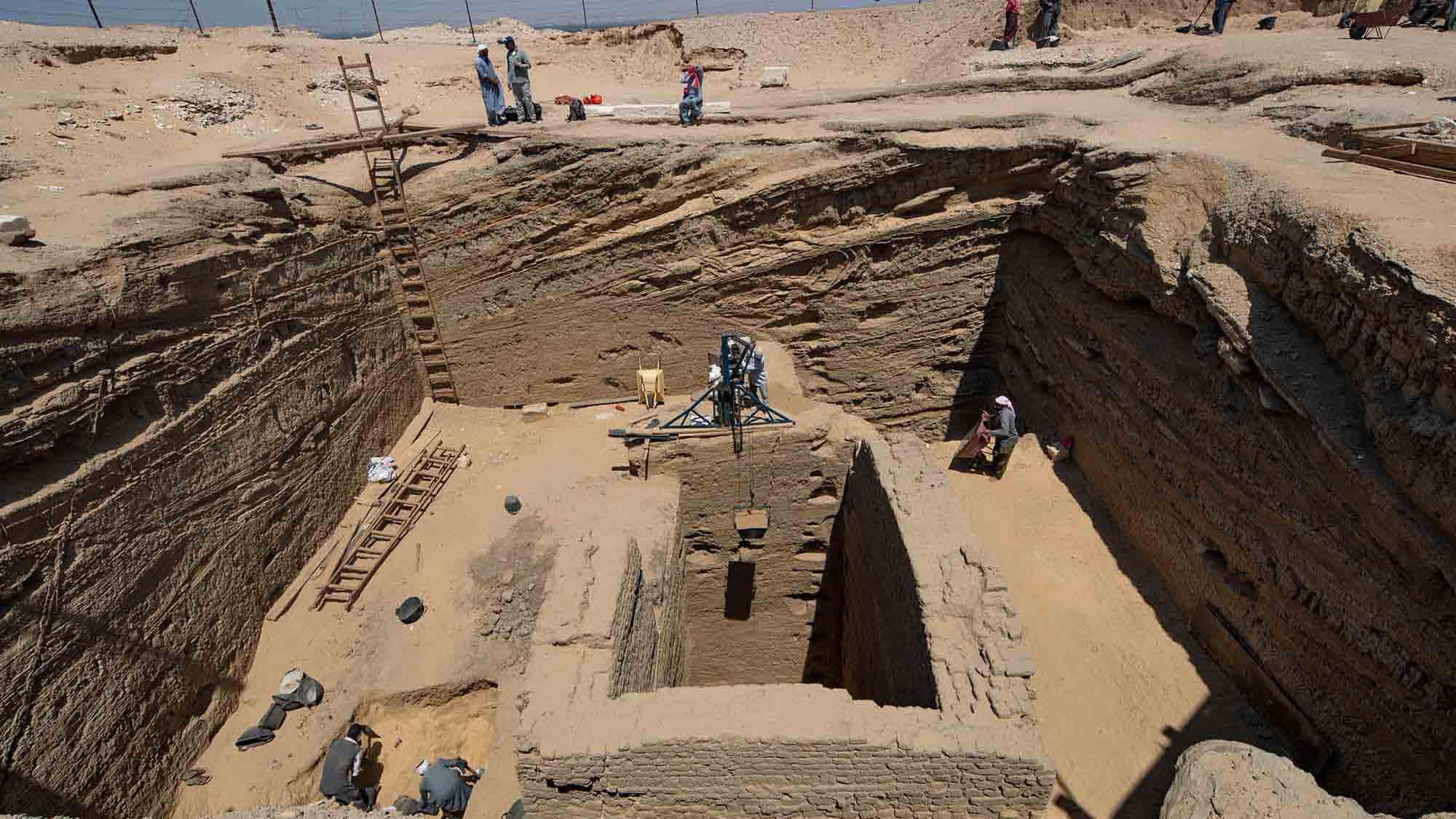The secret tomb of an ancient Egyptian general who ran an army of foreign mercenaries has been unearthed by archaeologists.
Egyptian military official Wahibre-mery-Neith was in charge of recruiting soldiers of fortune from Asia Minor and the Aegean Islands.
The burial shaft dates back to the early 5th century BC and was excavated by the Czech Institute of Egyptology at Charles University in Prague.

(The Egyptian Ministry of Tourism and Antiquities/Newsflash)
Inside the tomb, they found Egypt’s largest ever embalming store including 370 pottery jars containing materials used to mummify the commander.
The team also explored the ancient dignitary’s shaft tomb which measured about 14×14 metres wide.
At the bottom – 16 metres down – a double sarcophagus damaged by 5th-century looters was also found.
The outer layer of the sarcophagus was made from two giant blocks of limestone with a decorative, inner, human-shaped coffin.
Measuring 2.3 metres long and 1.9 metres wide, the inner coffin was found with its face smashed in and was made of a fine-grained rock.
It included inscriptions from the Book of the Dead and described the commander’s resurrection and journey to the afterlife.

(The Egyptian Ministry of Tourism and Antiquities/Newsflash)
Excavators did not locate the commander’s mummy, but found two wooden boxes with 402 earthenware figures created to serve him in the afterlife.
The findings also included alabaster jars, 10 cups and a piece of limestone pottery called an ostracon that was inscribed with religious texts.
The archaeological mission ended in June 2022 in Abusir, a UNESCO World Heritage site that sits between Giza and Northern Egypt.
The excavation marks a period from the beginning of Persian domination in Egypt, which began around 525 BC and lasted for 100 years.
Egyptians prospered under Persian King Darius I but suffered at the hands of leaders such as Xerxes I, who crushed revolts and disrespected local customs.
The tomb also allows researchers to paint a more colourful picture of the life of the foreign legion commander who, according to the archaeologists, “probably died very unexpectedly” as his “tomb and burial equipment were still unfinished”.


To find out more about the author, editor or agency that supplied this story – please click below.
Story By: Alice Amelia Thomas, Sub-Editor: Marija Stojkoska, Agency: Newsflash
The Ananova page is created by and dedicated to professional, independent freelance journalists. It is a place for us to showcase our work. When our news is sold to our media partners, we will include the link here.




